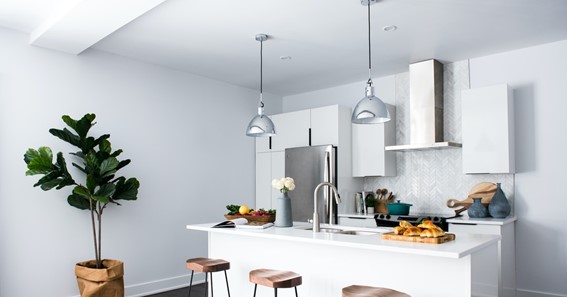Apartment buildings are large structures containing multiple residences. The building has shared entrances all unit occupants use to enter and exit. Residents and guests access individual units from doors opening to hallways inside the building. Occupants in ground floor units may also have doors providing access to a patio, while upper-level units typically have balconies.
Apartment buildings have been in use since the days of the Roman Empire. Today, apartment buildings stretch dozens of stories into the air in cities around the globe. Although most people associate apartments with rental units, it’s possible to purchase apartments in some places. Virtual staging software enables building managers to fill vacant units. Let’s look at what staging is, how virtual staging software works, and other marketing strategies building managers use to fill apartments.
click here – 6 Tips to Protect Your Retail Store
What is staging?

Home designs go through phases. For decades, consumers sought open concept homes. Open concepts presented challenges for those working remotely during the COVID-19 pandemic, primarily if children were engaged in remote schooling.
Home staging is a popular real estate trend, and it’s here to stay. It involves adding furniture and decor to a residence to highlight features and appeal to potential buyers or tenants. People may find it hard to visualize what they can do with an empty room, but adding furnishings helps them imagine using the space. Real estate agents recommend sellers and landlords stage homes because it helps expedite finding buyers or tenants. Staging companies provide furnishings and decor, move the items into the property, set them up, and remove them after properties are under contract. Although realtors will continue to suggest that home sellers have their properties physically staged, realtors and landlords are discovering the benefits of virtual staging software.
How does virtual staging software work?
Virtual staging solutions are ideal for apartment buildings. Managers take photos of empty units and upload them to the software. Virtual staging software makes it easy to add furniture and decor to the images, enabling potential residents to view a staged unit. Today’s best virtual staging software on the market includes Virtual Staging Solutions, Spotless Agency, Visual Stager, and iStaging.
Maximizing the effectiveness of virtual staging software begins with cleaning the actual unit and installing excellent lighting. Managers should have maintenance staff replace burned-out light bulbs. The photographers should open curtains and blinds while photographing the unit. Taking multiple images from various angles ensures you have plenty of images to work with, allowing you to highlight the unit’s best features effectively.
While you can alter the images yourself, you may want to hire an interior designer to modify your images. Interior designers use furnishings, artwork, color palettes, textures, and various materials to create a design aesthetic. Investing in an interior designer’s services is an excellent way to ensure you end up with a cohesive design plan tailored to your target audience. Suppose you’re renting a unit in a building that caters to single professionals. You may prefer images featuring a luxurious design style with a bar and plenty of high-tech equipment. Alternatively, if you’re renting a unit in a building mainly occupied by young families, you may include a nursery or children’s bedroom in your design plans. Expert designers use various styles, including rustic, industrial, classic, and farmhouse.
click here – REASONS TO HIRE PROFESSIONAL FINANCIAL TRANSLATION SERVICES
What other marketing strategies do building managers use?
Staged images can be included on brochures and posters promoting units. Building managers may also add images of building facilities, such as pools, fitness centers, dog parks, and playgrounds. These images sell the facilities as a whole, highlighting the benefits of apartment living. Managers may also use a dedicated website, social media marketing, and search engine optimization (SEO) marketing to promote units.
Virtual staging software enables managers to highlight unit features to potential tenants. Instead of having the actual apartment staged, managers can use the software to modify images of empty apartments, producing promotional material they can use on brochures, websites, and social media.
